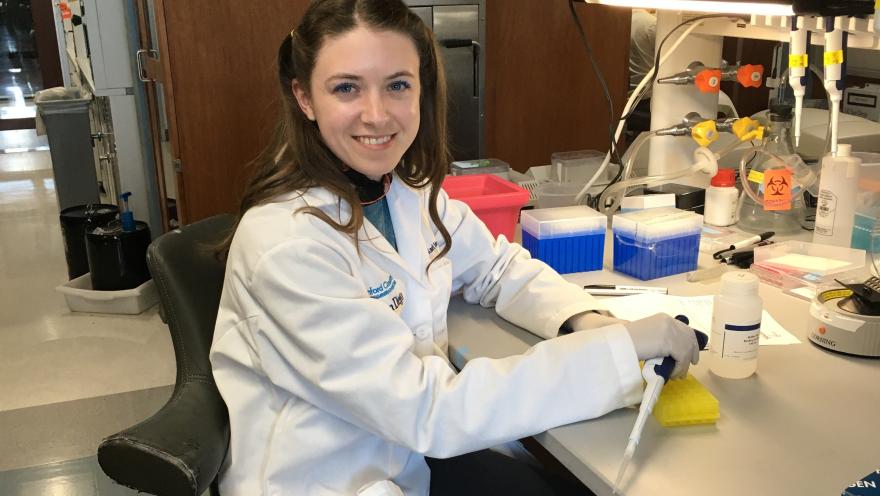The ALS Association is happy to continue our tradition of supporting bright, young scientists in ALS research through our Milton Safenowitz Postdoctoral Fellowship Program. These awards encourage young scientists to enter and, importantly, to remain in the ALS field.
We are proud that 90 percent of our funded postdoctoral fellows go on to start their own ALS research labs and continue to mentor more young scientists, further adding innovative ideas to the field.
This year we are supporting six new postdoctoral fellows out of a highly competitive applicant pool. This is the first in a series of six articles highlighting not only the dedication and unique contribution each fellow makes to ALS research but also the person behind the lab coat.
Today, we sit down with Dr. Meredith Corley from the University of California, San Diego to learn about her unique research project studying how specific RNA-protein interactions contribute to ALS disease.
Meredith Corley, Ph.D.
University of California San Diego
Mentor: Dr. Gene Yeo
Project: Accurate RNA structural studies of transcripts targeted by RNA binding protein hnRNP A2/B1
Why did you choose to focus on ALS research? What do you like about working in this field?
As an RNA and RNA structural biologist, I chose the ALS field because of the importance of RNA-protein interactions to the disease and the unexplored role of RNA structure in these interactions. ALS research provides me with an opportunity to apply my existing skills and knowledge to a disease in desperate need of answers. Because of the similarity of ALS to a whole spectrum of neurodegenerative disorders, studying ALS stands to benefit the treatment for numerous similar conditions.
Briefly describe the goals of your funded research project.
My research specializes in the cellular proteins that play a role in aggregate formation, which are clumps of proteins found in people with ALS. My goal is to further study one of the lesser-characterized proteins in this group, called hnRNP A2/B1, which is a type of RNA binding protein. RNA binding proteins are a diverse family of proteins that interact and manage cellular RNA molecules. I will also develop a technique to probe hnRNP A2/B1 structural interactions in the cell, which will be additionally applicable to other ALS-associated proteins.
What is the impact of your research on the ALS community?
Many ALS-associated proteins are known as RNA binding proteins because they bind RNA molecules. How these proteins interact with RNAs in normal and disease settings is of intense interest to the ALS research field. My research takes an alternative approach to studying RNA-protein interactions by characterizing the RNA structures that the proteins prefer, providing an avenue to discover how to disrupt the RNA-protein interactions that promote ALS.
Tell me something unique about yourself.
I have an identical twin, but when we were born, the doctors said we were fraternal. Over 20 years later, after countless people swore we looked identical, genetic testing confirmed we are, in fact, identical.
Is there anything else you’d like to add?
I would like to thank The ALS Association donors and supporters of ALS research and scientific research, in general. Your contributions make possible the otherwise impossible task of dedicating oneself to research that is of little interest to the commercial world.
Click here for more detailed information about Dr. Corley’s project.
The Milton Safenowitz Postdoctoral Research Program falls under our TREAT ALS Global Research Program and was founded by the Safenowitz family through the Greater New York Chapter of the Association. Mr. Safenowitz died of ALS in 1998 and the family and chapter continues its support to this day. Each award is for $100,000 over a two-year period.


Join the conversation. Please comment below.